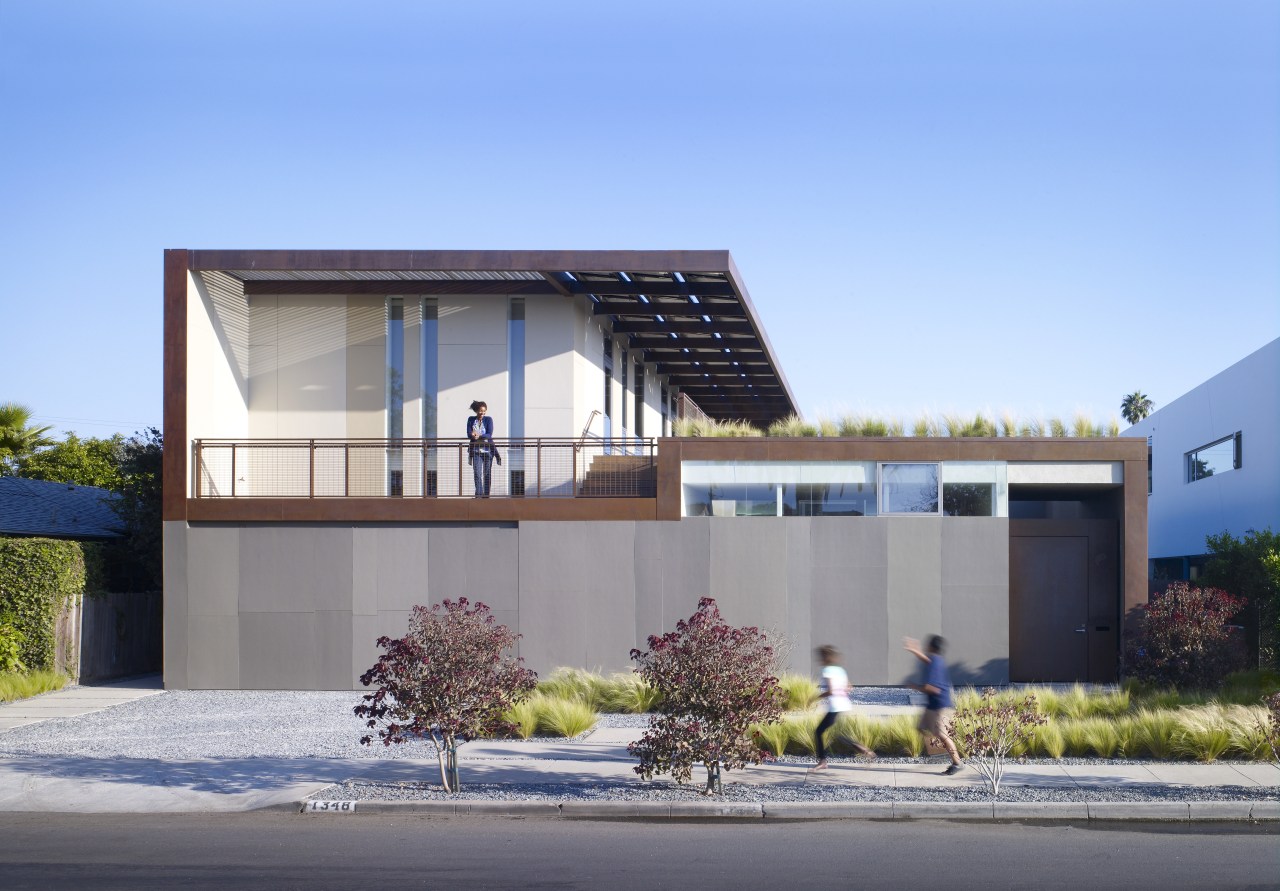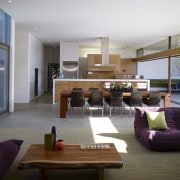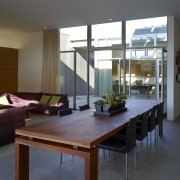Contemporary house with cement panel facade, cantilevered roof and celerestory windows
Modern home that optimises public spaces over private rooms

The modern age seems to celebrate the individual over the group in many homes, for example, a bedroom has the sense of being a private kingdom. Now imagine a house where community comes first, the bedrooms downplayed to better celebrate large, shared volumes.
This contemporary house by architect Lawrence Scarpa was designed as a space for a growing family with teenagers. The design creates a relaxed, yet organised environment that emphasises public space and breaks away from the stereotype of a typical suburban house, says Scarpa.
"On the first floor, the residence is organised around a series of courtyards that integrate with the interior, creating free-flowing volumes that blur the line between indoors and out," says Scarpa.
"These ground-level spaces offer maximum shared utility whether for entertaining or teenage gatherings. An office doubles as a student study area, for example, and a guest bedroom has a second role as a playroom with all areas connecting to the expansive living space."
Following the line of the property but perpendicular to the main living volume, the upper level comprises a run of understated bedrooms the added expense needed for larger bedrooms lavished instead on the open spaces below.
Every bedroom opens to an adjacent green roof and an exterior deck that leads to the rear yard. The grass roofs are an important aspect of the home's design a near-zero energy rating.

"A raft of elements contributes to this," says Scarpa.
"The house uses passive and active energy-efficient design. The passive elements alone reduce power consumption by as much as 50% when compared to a conventional house of similar size. Building performance is also optimised to ensure reduced energy needs."
Orientation in terms of solar and wind gain, a generous roof overhang, and large clerestory windows help keep the house cool in summer and warm in the winter. Spaces that are just one room deep from the exterior facilitate cross ventilation and light penetration into the interiors.
The green roofs also help keep summer temperatures down inside. In winter, the house benefits from thermal breaks in the concrete floor on both levels. Isolated, floating concrete slabs gradually absorb the sun's rays, providing passive heating in cold weather. In-floor water pipes provide active, radiant heating.
To power the heating and meet other energy needs, the top roof is fitted with 12 large photovoltaic panels these deliver sufficient electricity for the entire house.
Another way that the design facilitates sustainability is through an extensive use of recycled materials. A strict regime led by the architect made all subcontractors responsible for their own use of materials and wastage.
Minor elements of an earlier home on the site were also assimilated into the plan a far greener option than simply levelling the property.
When it comes to maintenance and upkeep, the durable house is designed to save human energy, too.
"The principal construction materials of recycled steel, cement and concrete all have a homogenous core, meaning any scratch will reveal the same material beneath," says Scarpa. "This translates into a low-upkeep residence."
While the design acknowledges global energy needs and is family friendly, it also respects the local suburban environment.
"From the rear, the house presents as a single-storey volume. The large master bedroom window and outdoor steps are scaled to support this illusion. Only when the steps are animated with people do you realise it is a two-storey structure."
Story by: Trendsideas
Home kitchen bathroom commercial design
9 tile shapes and finishes that think outside the square
Reflection and repose
Gabled approach














